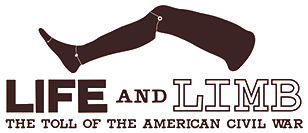
Class 2: The Trauma of Combat
Introduction:
No generalization can capture the diverse reactions that Northerners and Southerners felt toward the battlefield. Yet all were in agreement that combat was a terrifying and life-altering experience. This second class broadly explores how the battlefield left Union and Confederate soldiers deeply conflicted and confused about a war that they both abhorred and admired. A chapter from James McPherson’s classic, For Cause and Comrades, explores battle motivation and the bonding effect of combat. Students should use McPherson’s treatment of the psychology of battle to consider the ways that Northerners and Southerners tried to adjust to the alien world of organized mass killing. This discussion serves as a transition to an examination of the wartime writings of Henry Hayward, John Futch, Ujanirtus Allen, and David Beem. Each soldier offers a complicated and different impression of battle, simultaneously drawing and dissenting from a sentimental heroic culture, through which students can probe the tensions between the reality of soldiering and the dominant sentimental narrative of war as discussed in Class 1.
Readings:
Primary:
Allen, Ujanirtus. Campaigning with “Old Stonewall": Confederate Captain Urjanirtus Allen’s Letters to His Wife. Edited by Randall Allen and Keith S. Bohannon. Baton Rouge: Louisiana State University Press, 1998, 156–57.
Hayward, Ambrose Henry. Last to Leave the Field: The Life and Letters of First Sergeant Ambrose Henry Hayward, 28th Pennsylvania Volunteer Infantry. Edited by Timothy J. Orr. Knoxville: The University of Tennessee Press, 2010, 196–202.
John Futch to Martha Futch and Catherine Ramsey, August 2, 1863, John Futch Papers, North Carolina State Archives, Raleigh. Online Transcript.
David Beem to his wife, December 14, 1862, David Enoch Beem Papers, 1821–1923, 1954, Indiana Historical Society, Indianapolis. Online Transcript.
Secondary:
McPherson, James. For Cause and Comrades: Why Men Fought in the Civil War. New York: Oxford University Press, 1997, Chap. 3 and 6, Notes on Chap. 3 and 6.
Discussion Questions:
- Why does McPherson believe that Civil War soldiers were able to accommodate themselves to the horrors and violence of combat? In what ways do the letters conform to and contradict McPherson’s findings?
- Soldiers were quick to admit that combat was incomprehensible and that the horror of the experience was nearly impossible to translate through letters. Despite their frustrations, soldiers tried to convey the physical reality and sensations of battle. Compare Ujanirtus Allen’s letter to John Futch’s letter after Gettysburg. Why would two men, both members of Robert E. Lee’s Confederate army, represent combat in such different ways? How does the audience of their letters figure into their depictions of battle? Does class status and education figure into the different ways they experienced the front lines of war?
- After reading the letters of Allen, Beem, Futch, Hayward, do you believe that Civil War soldiers saw themselves as victors or victims of the battlefield? In answering this question, please consider the ways that soldiers embraced and revised aspects of the sentimental culture that carried them into war.


